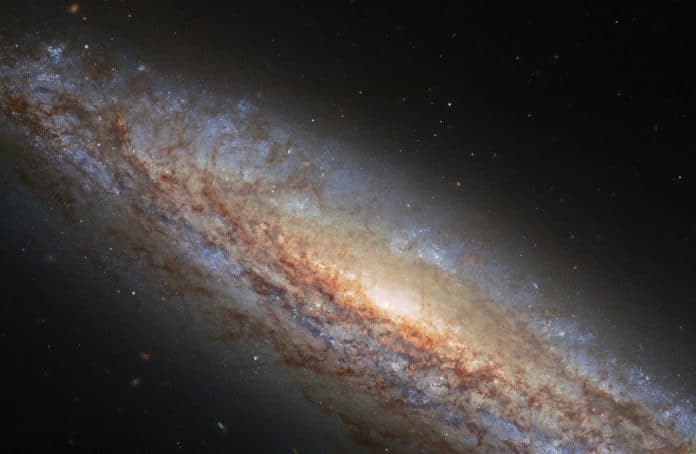NASA/ESA Hubble Space Telescope recently shared the image of a majestic spiral galaxy called NGC 4666. Located about 80 million light-years away in the constellation Virgo, the galaxy is a type of starburst galaxy, where a burst of star formation happens.
The galaxy is originally discovered in 1784 by the German-born astronomer William Herschel. It is also a member of an interacting system with NGC 4668 and a dwarf galaxy.
The reason for NGC 4666’s starburst is gravitational interactions with its unruly neighbors. This burst creates an unusual form of extreme galactic weather known as a superwind of flowing gas. This superwind is the result of driving winds from short-lived massive stars formed during NGC 4666’s starburst as well as spectacularly energetic supernova explosions.
Unlike in many other starburst galaxies, the star formation is spread across the disk rather than concentrated.
In 2014, a Type Ia supernova was detected in the galaxy. The supernova is still active in this image, but more than 900 days after it peaked, the supernova has faded from its former glory and looks like just one more star in this busy galaxy.
